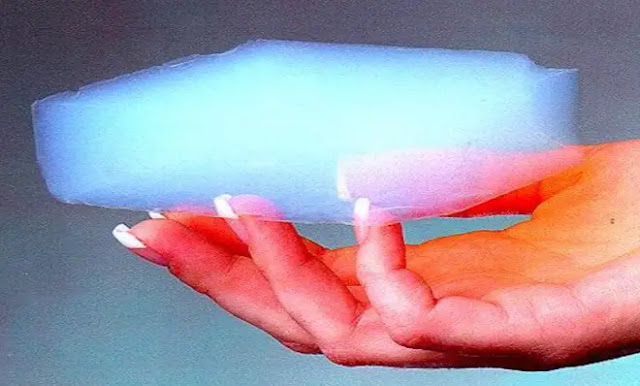Aerogels are the world’s light solid containing 99.8% air, and make for surprisingly great thermal insulators. Aerosols are the lightest (least dense) solid in the world. They are excellent thermal insulators and have been used on many Mars missions and stardust comet particle-return missions.
The global Aerogel market is expected to reach $ 785.4 million by 2022, which is not new. In fact, they have been around for a century. Over the years, this material has been used by NASA on many of its missions, although research proves that Aerogel architecture and other fields of design have a wide range of applications that have not yet been used.
This discovery was the result of a rule between the American scientist Steven Kistler and his colleague Chart, who wanted to see if it was possible to extract a liquid from a gel without affecting its solid composition.
Aerogel is not a substance that has a specific mineral or defined chemical formula, but the term is used to combine all substances with a specific geometric structure. The structure is highly porous, viscous foam, with high adhesion between structures with size of a few nanometers.
Most Aerogels are made of silica, but carbon, iron oxide, organic polymers, semiconductor nanostructures, gold and copper also form air gels. However, in Aerogel construction, there is very little solid content, 99.8% of the structure is air. This unique composition gives the Aerogel an almost ghostly look; Hence it is often referred to as ‘frozen smoke’.
Also Read: Ellora Caves Mystery - Was it built by Alien technology?
Properties of Aerogel
One of the best known and most useful physical properties of Aerogel is its excellent lightness - it usually has a density between 0.0011 to 0.5 g cm - 3. This means that Aerogel is usually 15 times the density of air, and only 3 times the density of air.
In recent years, Aerogel has been listed in the Guinness Book of World Records as having 'the lowest density solids', before being recently removed by metallic microlattice and then aerographite.
Aerogels are cellular solvents that incorporate very low density, wide surface area and consist of an open network of loose, bound particles or fibers enclosed by its gas-filled void.
Other properties of Aerogel are low thermal conductivity which is why it is used as thermal insulators; it is far more capable to handle thermal than glasses used in labs. Other properties are low dielectric constant, low refractive index, low sound speed.
Aerogels have very high porosity, good pore access, and high efficiency sites. They can therefore be an option that can be used as sensors. Studies of small silica nanoparticle Aerogel films have shown that their electrical resistance decreases significantly with increasing humidity.
Applications of Aerogel
Aerogel has wide application due to its chemical and physical property. Aerogel was all time favorite of NASA due to its extreme properties; NASA has used Aerogel for multiple space missions. Aerogel has a variety of chemical and physical properties, which is not surprising given its wide range of applications. Since 1960, Aircel has been used as an insulating material in NASA astronaut spacecraft, despite its intelligent existence it is very strong and can easily withstand take-off conditions.
At the beginning of the 21st century, NASA commissioned Aerogel to play a special role in capturing space dust. The Aerogel is being used with the UST Stardust mission, which aims to bring back particles from space beyond the moon for the first time.
Aerogel is beginning to become an important material in the insulation industry and has been used for many years for wall insulation and insulating boards injected into the cavity. Recently, air gel-based plaster has been used to insulate historic buildings in Switzerland.
Aerogel will be the new technology for
future and it will be used from clothing to space, it can replace all
insulators and all heat proof materials, it is very light that it can be very
comfort to use.
Aerogel to capture of cosmic dust
The Aerogel was used by the Stardust Sample Return Mission.7 to capture space dust particles from Comet Wild 2. The analysis of these frozen cells is important because they form our solar system. To collect the samples, the Stardust mission used a collector with two grids in opposite directions. There are different versions of the silica Aerogel of 130 versions to form a density gradient between the grids in a "tennis-racket" shaped metal structure. High-speed dust particles first touch the low-density Aerogel and they penetrate through the material. The increase in density slows down the cells and eventually traps them in the collector. It acts as an array of sequels or filters, gradually passing through cells with fine pores. Samples were collected with minimal damage and then brought to earth for further analysis.
Aerogel to Spacecraft Insulation
You can buy Silica Aerogel at amazon or
at any other online sites.









0 Comments
Don't post spam URLs